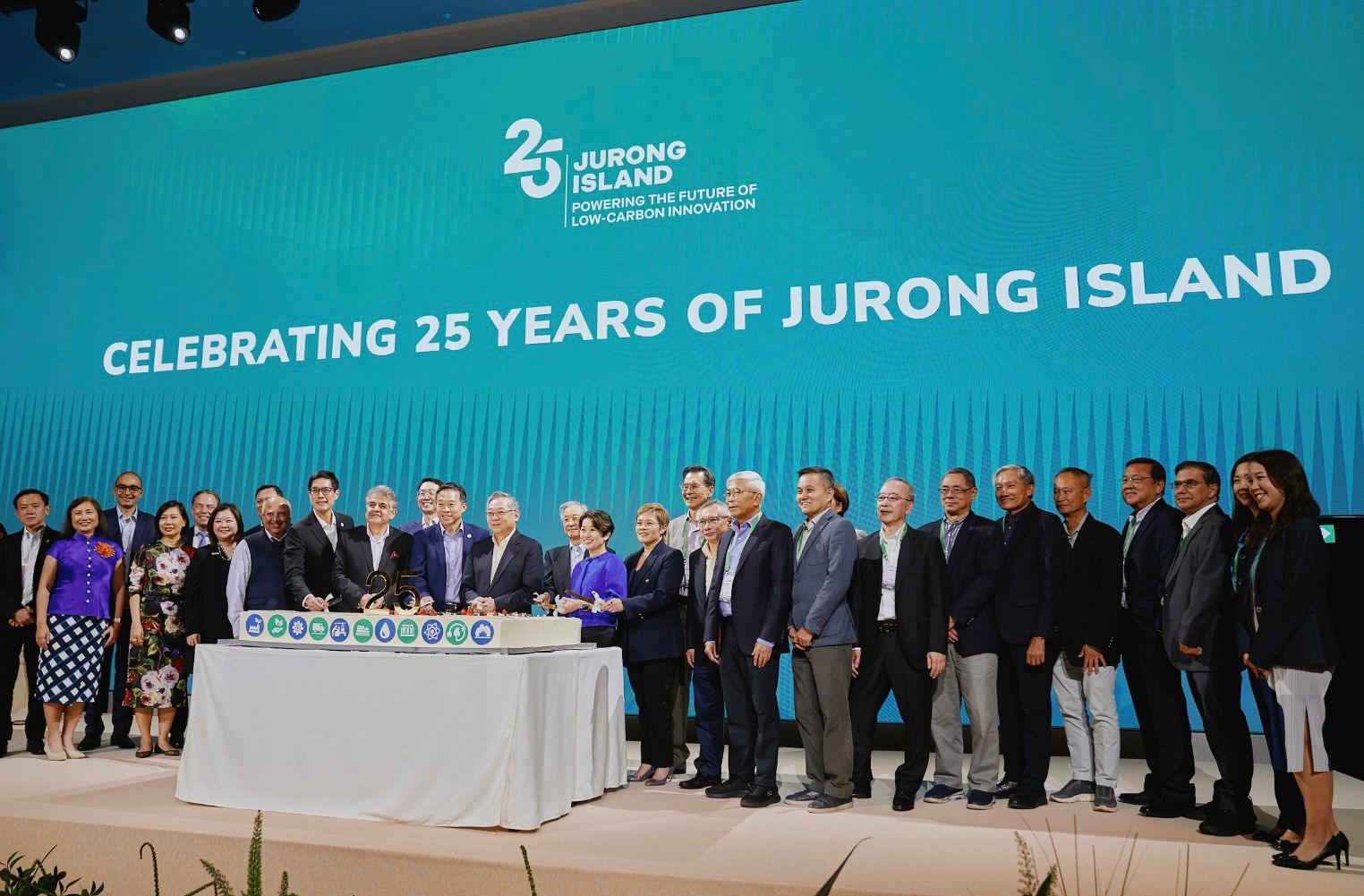Beginning May 2019, JTC’s SolarLand programme has begun to generate solar energy to the national grid via the installation of solar PV panels on vacant land. This not only maximises the use of land that is vacant in the interim, but also contributes clean energy to the national grid.
Sustainability remains at the core of JTC’s work. JTC’s solar initiatives aim to produce and utilise more solar energy in order to reduce Singapore’s grid dependency on the burning of fossil fuels. In January 2018, JTC awarded the contract for Phase 1 of its SolarLand programme to a joint venture of Terrenus Energy Pte. Ltd. and S.M.E. Electrical Pte. Ltd, as part of its pilot initiative to explore new ways to increase solar power generation.
The plant became operational in May 2019. Phase 1 of the SolarLand programme could generate up to 6.6GWh of renewable energy annually, which is equivalent to powering 1,475 units of 4-room flats for a year . This will result in an estimated reduction of around 2,700 tonnes of carbon emissions per annum.
The unoccupied 3.9 ha site at Jurong Island was identified as a suitable pilot site due to its large contiguous footprint which can accommodate the large-scale deployment of solar PV panels as an interim use.
The operator, Terrenus Energy, will be implementing a first-of-its-kind containerised solar PV system in Singapore. The system is a plug-and-play shipping container module that enhances the mobility of the system. The whole system can be installed, dismantled and moved to another location easily. The solar PV panels in the system also use a “clip & lock” mounting mechanism – clamps and other joint parts of the panels are designed to click and lock in place without the use of screws. This is expected to reduce installation time by around 30%. JTC will be working closely with Terrenus Energy to ensure that the solar PV system is easily re-deployable to alternative locations in the event that the current plot of land needs to be recovered.
Terrenus Energy is deploying a more efficient type of solar PV panel which uses a monocrystalline-PERC (mono-PERC) solar module. This advanced technology maximises energy production with its high-efficiency panels, resulting in greater energy generated per square metre. Compared to the traditional 72-cell polycrystalline solar module, the 72-cell mono-PERC solar module will be about 18% more efficient in capturing solar irradiance, delivering up to an additional 8,800 MWh of solar energy over the course of the project. The mono-PERC solar modules also have 1.5% lower Light Induced Degradation (LID) over the first year and perform better under heavy cloud conditions common in Singapore. Such higher efficiency of mono-PERC modules would be beneficial in maximising energy production in land-scarce Singapore.
Launch of JTC tender for SolarLand Phase 2
JTC has also launched a tender for SolarLand Phase 2 on 24 April 2019 which will allow JTC to move closer to its target of generating 100MWp of installed solar PV capacity by 2030 on JTC’s properties.
SolarLand Phase 2 will focus on the development and deployment of portable solar PV panels on available land and linkways in Changi Business Park, spanning an area of 11.6 hectares. JTC expects to generate another 14.9GWh of renewable energy annually, equivalent to powering 3,325 units of 4-room flats for a year1. This will result in an estimated reduction of around 6,200 tons of carbon emissions per annum.
The Phase 2 tender also specifies the requirements for the co-development of a mobile substation and mobile solar PV system with JTC. This will allow the system to be easily re-deployed in the event that the land or space needs to be recovered. This will also optimise the design, transport and installation of substations and solar PV systems, in order to reduce the start-up time required for deployment and solar power generation. Currently, existing substations in Singapore require several months to obtain the necessary authorities’ clearance, construct and commission. Tenderers are also encouraged to propose other efficient clean energy generation innovations for test-bedding with JTC.
Behind SolarLand
Mr Steven Ho, senior engineer from JTC’s Technical Services division, Mr Tan Chee Yong, senior engineer from JTC’s Future of Building and Infrastructure division, and Mr David Chan, Chief Operating Officer from Terrenus Energy are the brains behind the SolarLand project.
Mr Steven Ho was one of the lead project managers that launched phase 1 of SolarLand. “Working on such a project has made me become more passionate in energy conservation and excited about the future of renewable energy in Singapore. Now, I find myself exploring other renewable energy solutions. How about a micro-grid that’s independent from the main grid and sustained by the renewable energy it generates? What kind of new possibilities can that bring?” said Mr Ho, sharing that working on SolarLand has not only increased his knowledge of the renewable energy industry, but has also changed his mindset towards sustainability.
Mr Tan Chee Yong was also the project manager behind JTC’s pilot SolarRoof programme. SolarRoof enables the direct export of solar electricity, generated from the rooftops of JTC’s buildings to the national power grid. This allows consumers across Singapore to access solar energy generated from SolarRoof. Mr Tan shares that the learning lessons from SolarRoof were invaluable when working on the SolarLand project, “We learnt that it was very important to consult widely with industry experts to find out more about solar systems and requirements. The information they shared really helped us develop our tender requirements,” said Mr Tan. “My involvement in SolarRoof allowed me to build connections with players in the renewable energy industry, and I was heartened by the positive industry response when more than 90 participants from over 30 companies attended our Renewable Energy Networking Session following the launch of SolarLand Phase 2.”
Similar to Mr Ho’s experience, Mr Tan also finds himself gaining an interest in solar power systems and how they can be applied. “The experience working on SolarRoof changed my perspectives on solar energy, and I brought this new lens into the SolarLand project. When preparing for the project, I proposed innovative ideas such as a mobile solar PV panel system and a mobile substation that allowed us to think beyond what has already been done in the solar industry. It has also taught me to think of new ideas beyond solar – what else can JTC do to support renewable energy and sustainability?” One way that SolarLand Phase 2 can value-add to the project is that tenderers are encouraged to propose other efficient clean energy generation innovations for test-bedding with JTC, allowing for more opportunities for JTC to embark on renewable energy initiatives in partnership with the industry.
Mr David Chan is the project lead from Terrenus Energy working on the SolarLand project. Having no prior experience in the renewable energy industry before joining Terrenus Energy, Mr Chan shares, “It was a steep learning curve for me when I was tasked to lead the SolarLand project. However, I’m extremely grateful to be working with JTC on it. As this is the first time that Terrenus Energy is embarking on such a project, working with JTC and tapping on their experience with the industry and solar projects have really helped to move the project forward. This project has also broadened the possibilities of renewable energy for me and my company, and has inspired us to explore more renewable energy solutions through the utilisation of land and space.”

